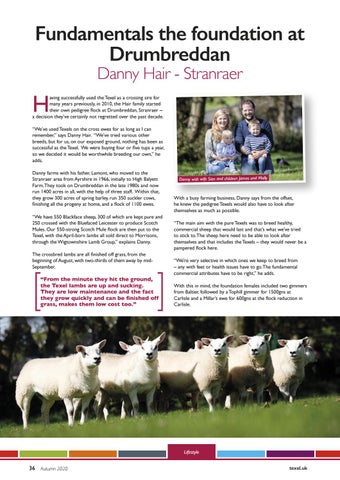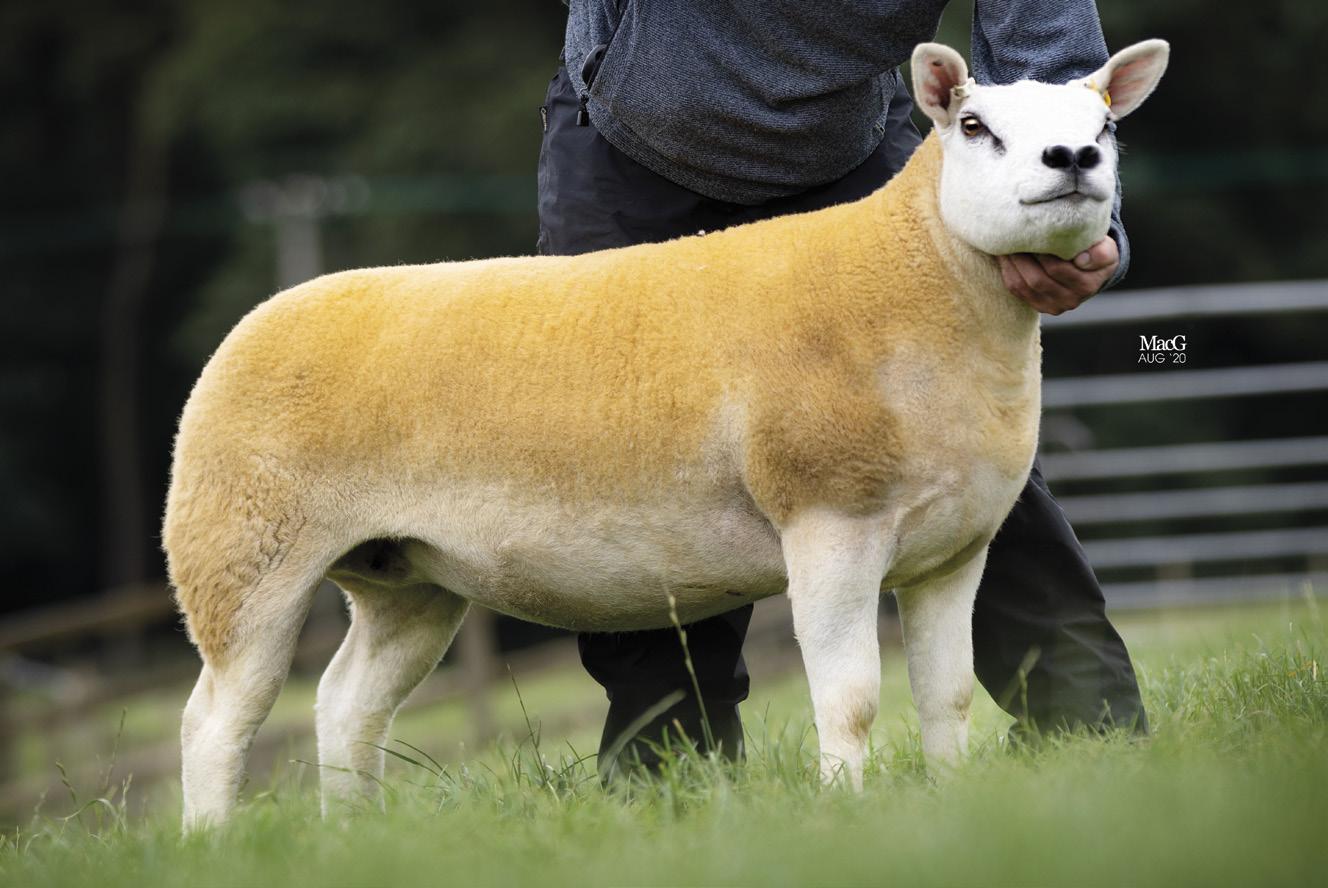Fundamentals the foundation at Drumbreddan Danny Hair - Stranraer
H
aving successfully used the Texel as a crossing sire for many years previously, in 2010, the Hair family started their own pedigree flock at Drumbreddan, Stranraer – a decision they’ve certainly not regretted over the past decade. “We’ve used Texels on the cross ewes for as long as I can remember,” says Danny Hair. “We’ve tried various other breeds, but for us, on our exposed ground, nothing has been as successful as the Texel. We were buying four or five tups a year, so we decided it would be worthwhile breeding our own,” he adds. Danny farms with his father, Lamont, who moved to the Stranraer area from Ayrshire in 1966, initially to High Balyett Farm. They took on Drumbreddan in the late 1980s and now run 1400 acres in all, with the help of three staff. Within that, they grow 300 acres of spring barley, run 350 suckler cows, finishing all the progeny at home, and a flock of 1100 ewes. “We have 550 Blackface sheep, 300 of which are kept pure and 250 crossed with the Bluefaced Leicester to produce Scotch Mules. Our 550-strong Scotch Mule flock are then put to the Texel, with the April-born lambs all sold direct to Morrisons, through the Wigtownshire Lamb Group,” explains Danny. The crossbred lambs are all finished off grass, from the beginning of August, with two-thirds of them away by midSeptember.
“From the minute they hit the ground, the Texel lambs are up and sucking. They are low maintenance and the fact they grow quickly and can be finished off grass, makes them low cost too.”
Danny with wife Sian and children James and Molly
With a busy farming business, Danny says from the offset, he knew the pedigree Texels would also have to look after themselves as much as possible. “The main aim with the pure Texels was to breed healthy, commercial sheep that would last and that’s what we’ve tried to stick to. The sheep here need to be able to look after themselves and that includes the Texels – they would never be a pampered flock here. “We’re very selective in which ones we keep to breed from – any with feet or health issues have to go. The fundamental commercial attributes have to be right,” he adds. With this in mind, the foundation females included two gimmers from Baltier, followed by a Tophill gimmer for 1500gns at Carlisle and a Millar’s ewe for 600gns at the flock reduction in Carlisle.
Lifestyle
36 Autumn 2020
texel.uk










